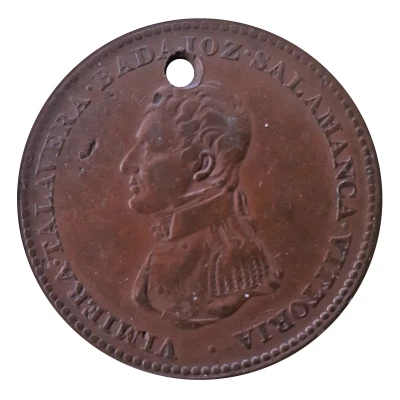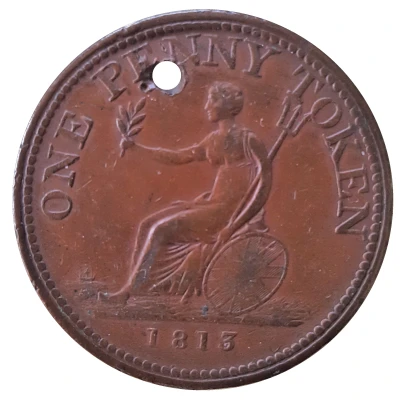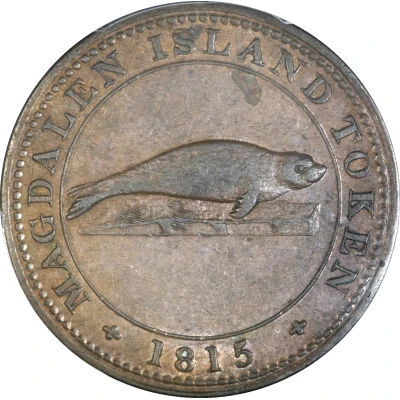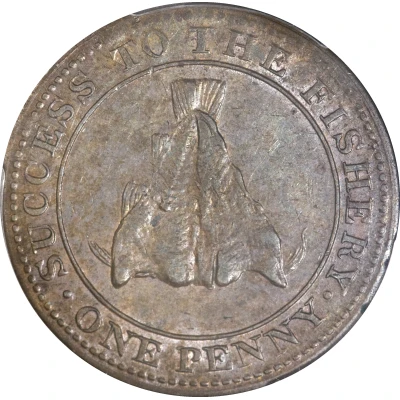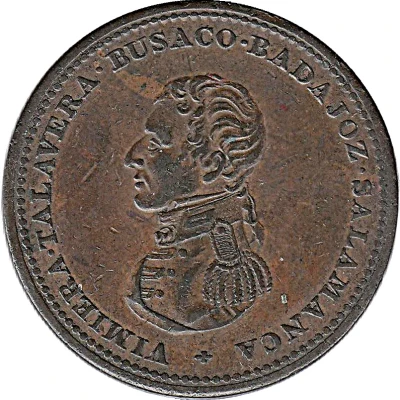
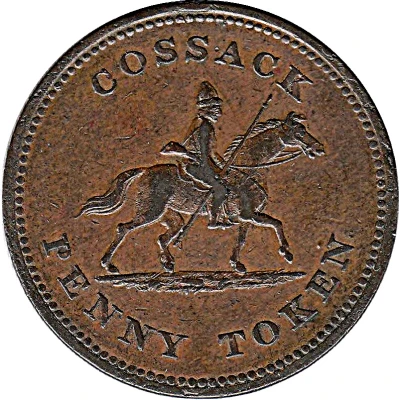

1 Penny Wellington - Cossack ND
1813 year| Copper | 18 g | 33.9 mm |
| Issuer | Lower Canada (Canadian provinces) |
|---|---|
| Type | Token |
| Year | 1813 |
| Value | 1 Penny (1⁄240) |
| Currency | Pound |
| Composition | Copper |
| Weight | 18 g |
| Diameter | 33.9 mm |
| Thickness | 2.2 mm |
| Shape | Round |
| Technique | Milled |
| Orientation | Medal alignment ↑↑ |
| Demonetized | Yes |
| Updated | 2024-10-04 |
| Numista | N#82196 |
|---|---|
| Rarity index | 85% |
Reverse
A mounted Cossack holding lance, riding to right. Lettering above and below, beaded border
Script: Latin
Lettering:
COSSACK
PENNY TOKEN
Engraver: Thomas Halliday
Edge
Central milling
Comment
WE-13A: No grass behind rear hoof
WE-13B: Grass behind rear hoof
Despite the similarities with the Wellington tokens, the Cossack token is not always considered a Canadian one. RW McLachlan and Thomas Wilson considered this token as an English token. It was struck in 1813 as a souvenir of the visit by a Russian Cossack named Alexander Wittischendst to London, England.
It was probably struck at the mint of Sir Edward Thomason, in Birmingham, England.
Wellington tokens are named as such because they have a portrait of Wellington on the obverse. Most were struck in England for use in England between 1812 and 1814, although one large issue are the 1812 types that were for English troops in Spain and Portugal during the Peninsular Campaign of the Napoleonic wars. A few are also of Irish origins. By some time in 1814 their use in England was banned so many were shipped to the British colonies for use, and some may have been carried over with British Troops sent to fight in the America's during the War of 1812. These tokens were used in Canada but their circulation there was limited, and mostly in Lower Canada.
Catalogues: Breton # : 985, Charlton # : WE13, Courteau # : 24, Da # : 92
Interesting fact
One interesting fact about the Token 1 Penny (Wellington - Cossack) ND (1813) from Lower Canada (Canadian provinces) made of Copper weighing 18 g is that it was used as a form of currency in the early 19th century in what is now Quebec and Ontario, Canada. At that time, there was a shortage of official currency, so private tokens like this one were issued by merchants and traders to fill the gap. The coin features an image of the Duke of Wellington, who was a famous military leader, and a Cossack, which was a member of a group of people who lived in the steppes of Eastern Europe and were known for their horsemanship and military prowess. The coin's design was meant to symbolize the strength and power of the British military.
